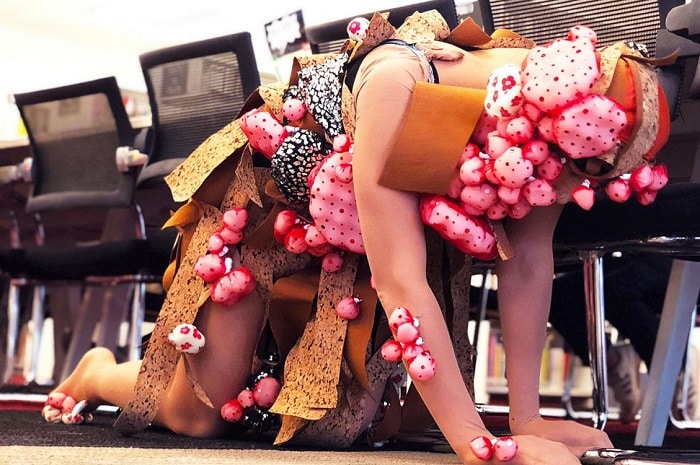Emylia Safian Talks ‘Traces’, An Exhibition On Art Therapy And Mental Health
PUBLISHED December 12th, 2018 05:00 am | UPDATED December 13th, 2018 12:58 pm
Art therapy and mental health: neither of them are everyday conversational topics. In fact, we tend to avoid both subjects altogether, especially since mental illnesses are still stigmatised in Asian cultures. That’s why Traces, a first-of-its-kind group exhibition led by students of LASALLE’s Art Therapy programme, piqued our interest. We took a walk with the programme’s lecturer and educator Emylia Safian to find out more.
What is Traces about?
Traces is a collection of responses and reflective experiences by some of our MA Art Therapy trainees’ professional interactions with children living with adversity. In this exhibition, the art therapists are the artists. Traces is unique in that the artwork of the art therapist has always been kept private. Because of their intimate work with and understanding of the vulnerable, these artworks showcase the more emotive development of our students in their own terms beyond what they have been practicing daily with their supervisors privately.

For example, a digital video/performance art piece by one of our students titled Nowhere attempts to express the lack of identity and sense of rootlessness felt by children from shelters, posing the question of how we can relate or connect to someone so different from us, and vice versa.
Who is art therapy for?
You don’t necessarily have to have a major mental or physical illness to be a client in art therapy. The world today is very stressful due to factors such as fast pace of life. And with stress come a lot of triggers that affects human development. Art therapy allows us to develop deeper insights into what makes us feel unhappy or unwell in an upsetting situation, and even understand how childhood issues could impact later experiences and relationships as a grown up.
art therapy can be for anyone: children, adolescents, and also adults with mental health conditions or suffering from trauma, unable to articulate their emotions and experiences in a verbal manner. There are also young or special-needs children who simply did not have the vocabulary to express what they were going through emotionally.

How is art therapy different from stress-relieving activities such as art jamming?
There are many people who might confuse art therapy with other art-related activities and methods for de-stressing. One of the ways to distinguish art therapy is the clinical presence of the professional art therapist in the client’s long-term healing process.
In art therapy, the process of art-making is not just for art’s sake. Rather, the focus is on forming that bridge of communication between the client and art therapist through visual expressions and non-verbal cues. The art therapist builds a trusting relationship with the client throughout his or her healing journey because it’s not the art-making that heals, but art-making through a relationship that heals. The artworks emerging from clients and therapists in these sort of sessions is geared towards transcending our reliance on language as a form of communication since the artwork will be able to speak for itself.
Since art is subjective, how does the art therapist ensure objectivity in their interpretations of an artwork?
That’s actually a very common concern among students starting out in the discipline. The unconscious self is in all of us, so if the unconscious self of the therapist emerges in a session, it might actually do more harm than good to the client.

Art is subjective, but only if one is concerned with interpretation through the lens of visual aesthetic. In art therapy, we are looking out for behavioral factors such as repeated patterns and the specific choices made by the client when selecting a material or colour. Beyond that, all professional art therapists continue to be under supervision to check on their blind spots. It is the responsibility of the therapist to be in a constant state of reflection on his or her actions to maintain objectivity.
What does Traces hope to achieve?
As art therapists, we are playing roles of both audience and artists, facilitating and witnessing clients’ art-making. In an exhibition like this, the role of art is to become a voice for the vulnerable persons that we work with, expressed in our own emotive ways for the public audience to understand.
We are hoping to facilitate a greater understanding of mental health and well-being among youth by encouraging dialogue, thinking and support from the community in terms of social healing. To invite the public to be more compassionate and more empathetic when faced with differences, and to connect and care for their regular neighbours and friends.
Traces Exhibition runs daily from now till 23 December 2018 at the Ngee Ann Kongsi Library, LASALLE, 1 McNally Street. Admission is free.

